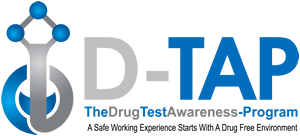Drugs of Abuse
STREET NAMES/SLANG TERMS:
Booze, Jungle-juice, Spirits
WHAT IS IT AND HOW IS IT USED?
Alcohol is the ordinary name for a substance called ethyl alcohol, grain alcohol, or pure spirits (chemical name, ethanol). Ethyl alcohol, or ethanol, is formed by the fermentation of grains or any sweet fruit juice. An alcoholic drink is any beverage that contains ethyl alcohol in intoxicating quantities. The amount of alcohol may be as little as 2 percent, as in beers, and or as much as 68 percent, as in absinthe.
Alcoholic content in most alcoholic beverages is measured in proof, which is half of the actual content of alcohol in the drink. A 90 proof whiskey actually only contains 45 percent alcohol. Beer is one of the beverages containing the lowest proof. They range from 2 to 6 percent. Wines have anywhere from 14 percent or less.
Alcohol is the most commonly used and widely abused psychoactive drug in this country. It is a legal product for adults to purchase and consume.
IT’S EFFECTS:
When a person drinks alcohol, the ethanol is rapidly absorbed from the stomach and enters the bloodstream, which then goes to all the tissues. The factors that influence alcohol’s effects range from a person’s size and weight to the amount of food that was eaten prior to drinking to the type of alcohol that is consumed. A single drink can begin to relax a person and their senses, which can make one less inhibited and is why alcohol is used in many social situations; however, a lot of people don’t stop at just one drink.
Immediate effects of alcohol on a person include a lack of coordination, dulled mental processes, slowed reaction time and slurred speech. Drinking large quantities can lead to sleepiness, disturbed sleep, nausea, and vomiting. Hangovers are another effect after large amounts of alcohol are consumed; a hangover consists of a headache with nausea, thirst, dizziness, and fatigue.
Prolonged, heavy use of alcohol can lead to an addiction called alcoholism. Alcoholism is considered a disease, and is characterized by four factors: 1) a strong urge, or need, to drink; 2) the inability to stop drinking once drinking has begun; 3) physical dependence on alcohol, which shows itself in withdrawal symptoms, such as nausea, sweating, shakiness, and anxiety, after stopping drinking; and 4) an increased tolerance to alcohol, where one needs to consumer greater amounts to get “high”.
An alcoholic can come from any walk of life and be of any age and ethnic group. Investigations have found that alcoholics use alcohol as a means of escape from the day-to-day pressures of everyday life. They feel that they cannot cope without the alcohol in their system. Not all alcoholics are “drunks.” Some alcoholic’s don’t even like the taste of alcohol but will still continue to drink in order to cope with life. Aggressive acts and violent crimes have been linked to alcohol abuse, including domestic violence, murder, rape, and child abuse.
Long-term effects of consumer large quantities of alcohol can lead to permanent damage of vital organs, such as the brain and the liver, and ultimately, death. In addition, mothers who drink alcohol during pregnancy may give birth to infants with fetal alcohol syndrome. These infants may suffer form mental retardation and other irreversible physical abnormalities. Research also indicates that children of alcoholic parents are at a greater risk than other children of becoming alcoholics.
STREET NAMES/SLANG TERMS:
Bennies, Black beauties, Dexies, Jollies, Speed, Uppers, Ups, Wake-ups.
WHAT IS IT AND HOW IS IT USED?
Amphetamines are stimulants that affect the central nervous system of the body, causing reactions similar to cocaine. The effect is not as immediate, but it is more prolonged.
Amphetamines are synthetically reproduced in a laboratory, and are frequently ingested in a pill form, though they can also be inhaled or injected.
IT’S EFFECTS:
Amphetamines may produce euphoria, while increasing feelings of sexuality and invigoration. Increased talkativeness, aggressiveness, heart rate, and blood pressure, as well as dilated pupils, hallucinations, and compulsive and repetitive actions are some of the effects this drug may have on the user. In addition, because of their stimulating, “speed” effect, amphetamines are commonly used as appetite suppressants. They interfere with normal sleep patterns, and decrease fatigue and the apparent need for sleep.
Amphetamines and cocaine produce markedly similar psychological effects, including excitability, progressively severe anxiety and confusion, and ultimately, paranoia. Vivid visual, auditory, and olfactory hallucinations, delusions of persecution, body image changes, and sometimes picking and excoriating of the skin characterize the fully developed amphetamine psychosis. In chronic amphetamine users, this psychosis may be difficult to distinguish from a schizophrenic reaction, especially when the physical signs are not apparent.
The effects of large doses can produce a whole range of health problems in users. The speed aspects of the drug causes the body to almost literally burn itself out. It makes the body run harder and longer than it was ever supposed to. Since speed takes away the desire for food, malnutrition occurs. Teeth and bones are quickly affected, as are the heart, liver, and lungs. An increased tolerance and dependence on amphetamines can lead to violent and aggressive behaviors. Amphetamines can be addictive.
STREET NAMES/SLANG TERMS:
Big C, Blow, Coke, Crack, Flake, Freebase, Lady, Nose candy, Rock, Snow, Snowbirds
WHAT IS IT AND HOW IS IT USED?
Cocaine is an alkaloid extracted from the leaf of the coca bush (Erythroxylum coca), which is cultivated at high altitudes in Columbia, Peru, and other Andean countries. Cocaine is a powerful stimulant
When cocaine is processed into a white powder, it can be absorbed into the blood stream by the mucous membranes of the body. The chemical acts directly on the instinctive pleasure centers of the brain to produce a surge of energy, pleasure and a sense of confidence that lasts about 20 minutes. A user, who wants to maintain the high, takes one dose after another. As a result, the body develops a tolerance to cocaine and a strong dependence on it. When animals are taught to medicate themselves with cocaine, they will ignore food, water, and a receptive mate and continue to compulsively administer the drug until death – usually from cocaine-induced seizures.
Users will snort cocaine through the nose, inject it directly into the bloodstream, or inhale the fumes of a specially prepared cocaine base, call “free-basing,” where absorption into the bloodstream is as rapid as by injection. “Crack” is an example of cocaine, which has been prepared for smoking or “free-basing.”
IT’S EFFECTS:
Cocaine’s immediate effects include dilated pupils, increased temperature, heart rate, blood pressure, insomnia, loss of appetite, feelings of restlessness, irritability and anxiety. Its euphoric effects, such as energy and a mental clarity, depend on how it is used. The faster the absorption, the more intense the high. The more intense the high, the shorter-lived it is. The high from snorting may last from 15 to 30 minutes, while smoking may last 5 to 10 minutes. Cocaine withdraws rapidly from the brain, making the user feel depressed, irritable and fatigued. This “coke crash” reinforces the brain’s craving for a repeated dose to reduce the withdrawal symptoms.
High does and/or regular usage can lead to many health problems, such as sinusitis, damage to vocal cords, ulceration of nasal membranes, dental infection, malnutrition, and vitamin deficiencies. Users frequently become paranoid. Injecting, smoking and snorting have killed people through cardiac arrest, irregular heart rhythms, breathing problems, and convulsions.
STREET NAMES/SLANG TERMS:
Adam, Bean, E, Ecstasy, M, Roll, X, XTC
WHAT IS IT AND HOW IS IT USED?
Ecstasy is a synthetic drug with amphetamine-like and hallucinogenic properties. Its chemical name is a 3-4 methylenedioxy-N-methylamphetamine or MDMA. Since it is synthesized in clandestine laboratories, its purity can vary from lab to lab, and other compounds are easily combined into the same tablet, like caffeine, ephedrine and ketamine.
The nerve pathway that is affected by Ecstasy is called the serotonin pathway. Serotonin is involved in the regulation of several processes within the brain, including mood, emotions, aggression, sleep, appetite, anxiety, memory and perceptions, and sweating and heat regulation.
It comes in a tablet form and is ingested, frequently at all-night dance parties called “raves,” to keep one’s energy level up and for its mood enhancement effects. “Stacking” is a common practice, where users will take multiple doses of Ecstasy in one night to reinforce its effects.
IT’S EFFECTS:
The chemical structure of Ecstasy allows it to reach the brain quickly after ingestion. Taken on an empty stomach, its effects can be felt as quickly as 15 minutes. The most desirable effect of Ecstasy is its ability to provide feelings of warmth and empathy. Physical symptoms can include muscle tension, involuntary grinding of teeth, nausea, blurred vision, rapid eye movement, faintness, and chills or sweating.
Ecstasy is an unusual drug. Even after the drug itself has been flushed form the body, it still has effects that continue to develop and persist. These often include the development of depression-like feelings, anxiety, restlessness, irritability, and sleep disturbances. These “after-effects” occur because of the chemical change that takes place at the serotonin synapse.
Chronic use of MDMA has been found, first in laboratory animals and more recently in humans, to produce long-lasting, perhaps permanent, damage to the neurons that release serotonin, and thus, verbal and visual memory impairment.
In addition, Ecstasy inhibits normal sweating, which cools the body. Because of this, the body may overheat, especially when used at dance parties, and the person can have a heat seizure and stop breathing. They may have heart irregularities, too, because of the over-heating, and this combination is the most frequent cause for death.
Heroin
STREET NAMES/SLANG TERMS:
Big H, Black Tar, Brown Sugar, China White, Dope, H, Horse, Junk, Mud, Skag, Smack
WHAT IS IT AND HOW IS IT USED?
Heroin is a highly addictive drug derived from morphine, which is obtained from the seed pod of the opium poppy plant. It is a “downer” that affects the brain’s pleasure systems and interferes with the brain’s ability to perceive pain.
Heroin usually appears as a white to dark brown powder, or as a tar-like substance. Some varieties are nicknamed for the geographical area in which the heroin is produced, such as “Mexican Black Tar.”
Heroin can be used in a variety of ways, depending on user preference and the purity of the drug. Heroin can be injected into a vein, called “mainlining,” smoked in a water pipe or a standard pipe, mixed in a marijuana joint or regular cigarette, inhaled as smoke through a straw, known as “chasing the dragon,” or snorted as a powder through the nose. Smoking and snorting heroin is becoming increasingly popular, because the purity of street heroin is greater than in previous years, alongside the misconception that these forms will not lead to addiction.
IT’S EFFECTS
According to the National Institute of Drug Abuse, the short-term effects of heroin abuse appear soon after a single dose and disappear in a few hours. The user reports a surge of euphoria, or “rush,” accompanied by a warm flushing of the skin, a dry mouth, and heavy extremities. Following this initial euphoria, the user goes “on the nod,” an alternately wakeful and drowsy state. Mental functioning becomes clouded due to the depression of the central nervous system. Other effects included slowed and slurred speech, slow gait, constricted pupils, droopy eyelids, impaired night vision, vomiting, and constipation.
Chronic users may develop serious health conditions, such as collapsed veins, infection of the heart lining and valves, abscesses, cellulites, and liver disease. Pulmonary complications, including various types of pneumonia, may result from the poor health condition of the abuser, as well as from heroin’s depressing effects on respiration.
In addition to the effects of the drug itself, street heroin may have additives that do not readily dissolve and result in clogging the blood vessels that lead to the lungs, liver, kidneys, or brain. This can cause infection or even death of small patches of cells in vital organs.
Heroin abuse can result in fatal overdose, spontaneous abortion, and infectious diseases, including HIV/AIDS and hepatitis.
STREET NAMES/SLANG TERMS:
Laughing Gas, Poppers, Rush, Snappers, Whippets
WHAT IS IT AND HOW IS IT USED?
Inhalants are everyday household products that are being misused by children to get high by being sniffed or inhaled. At last count, there are over 1400 products on the market that are being abused. Examples include model airplane glue, nail polish remover, cleaning fluids, hair spray, gasoline, the propellant in aerosol whipped cream, spray paint, fabric protector, air conditioner fluid (freon), cooking spray and correction fluid.
The chemical vapors of these products are sniffed or snorted through the nose, “bagged” (inhaling fumes from a plastic bag), or “huffed” (stuffing an inhalant soaked rag into the mouth). Many people do not think of inhalants as drugs, because most of the products were never intended to be used that way.
IT’S EFFECTS:
Nearly all inhalants produce effects similar to anesthetics, which act to slow down body functions, yet the user feels stimulated. These intoxicating effects can last from a few minutes to several hours, if the inhalant is used repeatedly. Other effects include nausea, loss of appetite, bad breath, double vision, runny or bloody nose, lack of coordination, feeling and looking tired, eye irritation, sneezing, coughing, vomiting, diarrhea, headache, chest pain, ringing in the ears, and an erratic heart beat.
Sniffing highly concentrated amounts of the chemicals in solvents or aerosol sprays can directly induce heart failure and death. This is especially common from the abuse of fluorocarbons and butane-type gases. High concentrations of inhalants also can cause death from suffocation by displacing the oxygen in the lungs and the central nervous system, so that breathing ceases. Other irreversible effects caused by inhaling specific solvents are hearing loss, limb spasms, central nervous system or brain damage. Serious but potentially reversible effects include liver and kidney damage and blood oxygen depletion. Death from inhalants is usually caused by a very high concentration of fumes, and can occur on the very first use.
STREET NAMES/SLANG TERMS:
Breakfast Cereal, Date Rape Drug, Ketaject, Ketalar, New Ecstasy, Psychedelic Heroin, Special-K, Super-K, Vitamin K
WHAT IS IT AND HOW IS USED?
Ketamine hydrochloride is a short-acting, hallucinogenic, ‘dissociative’ anesthetic. The anesthesia is the result of the patient being so ‘dissociated’ and ‘removed from their body’ that it is possible to carry out surgical procedures. This is wholly different from the ‘unconsciousness’ produced by conventional anesthetics, although ketamine is also an excellent analgesic (pain killer) by a different route (i.e. not due to dissociation). Ketamine is related to phencyclidine (PCP). In contrast to PCP, ketamine is relatively safe, is much shorter acting, and is still marketed in the US and a number of foreign countries as a general anesthetic in both human and veterinary medicine.
Ketamine is sold as an injectable liquid, which can be converted into a white powder, similar to cocaine, which is then re-packaged into small clear bags or capsules. Generally, ketamine is snorted, but sometimes it is added into tobacco or marijuana and smoked. “Special K” refers to ketamine used in combination with other drugs, such as Ecstasy, heroin, and cocaine.
IT’S EFFECTS:
Most people snort small lines or “bumps” for a mild, dreamy effect. The effect comes on within about 5 to 10 minutes. If swallowed, the effects come on in 10 to 20 minutes. Numbness in the extremities is also common.
Higher doses produce a hallucinogenic effect, and may cause the user to feel very far away form their body. A lost sense of time is common. This experience is often referred to as entering a “K-hole” and has been compared to a near death experience with sensations of rising above one’s body. While in a K-hole, it is very difficult to move, and people usually remain seated or lying down during the experience. However, these near overdose experiences also can cause delirium, impaired motor function, potentially fatal respiratory problems, convulsions, and vomiting.
STREET NAMES/SLANG TERMS:
Acid, Doses, Hits, Microdot, Sugar Cubes, Tabs, Trips
WHAT IS IT AND HOW IS IT USED?
LSD is synthesized from lysergic acid, which is found in the fungus on rye and other grains. LSD is also the most potent mood and perception-altering drug known: oral doses as small as 30 micrograms can produce effects that last 6 to 12 hours.
It is initially produced in a crystalline form, which is then crushed into a powder and mixed with binding agents to produce tablets known as “microdots” or thin squares of gelatin called “window panes.” More commonly, it applied to sheets of paper called “blotter paper,” which is then cut-up into 1/4 inch squares for individual usage. The color of LSD can range from clear or white, which is its purest form, all the way to black, due to various manufacturing techniques and contaminants. Even uncontaminated LSD begins to degrade and discolor soon after it’s manufactured; thus, drug dealers frequently apply LSD to colored paper to hide the drug’s purity or age.
All LSD manufactured in this country is intended for illegal use, since LSD has no accepted medical use in the United States.
IT’S EFFECTS:
LSD’s effects typically begin within 30 to 90 minutes after ingestion and may last up to 12 hours. Users refer to the hallucinogenic experience as a “trip,” and to negative reactions as a “bad trip.” Basically, the effects of LSD are unpredictable. They vary with amount taken, and the user’s personality, mood, expectations, and surroundings.
Some effects include increased blood pressure and heart rate, dizziness, loss of appetite, dry mouth, sweating, nausea, numbness, and tremors. However, most of the dramatic changes are emotional and sensory. The user’s emotional state may swing dramatically from one end of the spectrum to the other, and have such rapid transitions the user may seem to experience several emotions simultaneously. In addition, sensory perceptions may overlap in a phenomenon known as “synesthesia,” which gives the person the feeling of hearing colors and seeing noises.
Often, visual and aural hallucinations take place, and the person may be disoriented, not knowing where they are, the time it is, or may perceive their own body physically changing. These changes can be frightening and can cause panic.
One long-term effect of LSD is the experience of “flashbacks.” Days later, even up to a year later, the user may suddenly, often without warning, have a recurrence of certain aspects of a previous “trip.” But users who used the drug only once have also noted this effect.
LSD is not considered an addictive drug, because it does not produce compulsive drug-seeking behavior like cocaine, amphetamines, heroin, alcohol, or nicotine. More users voluntarily decrease or stop its use over time.
STREET NAMES/ SLANG TERMS:
Aunt Mary, Boom, Chronic, Dope, Gangster, Ganja, Grass, Hash, Herb, Kif, Mary Jane, Pot, Reefer, Sinsemilla, Skunk, Weed
WHAT IS IT AND HOW IS IT USED?
Marijuana is the most frequently used illegal drug in the United States today. It is made from the leaves and shredded flowers of the Indian hemp plant, called Cannabis sativa. Of the 421 active chemicals found in the plant, THC (delta-9-tetrahydrocannabinol) is the most powerful, slowly releasing a fat-soluble substance that is absorbed by the user and can be detected for 3 to 4 weeks after ingestion. In addition, because of advanced techniques of genetic selection and high intensity lighting, the TCC levels of marijuana today may be 15 to 20 items stronger than that available just 20 years ago. An example of this is the Sinsemilla variety produced and favored by heavy users.
Most users roll loose marijuana into cigarette-form, called a “joint,” or smoke it in a pipe. One well-known type of water pipe is the “bong.” Marijuana can also be eaten, usually mixed into a food, or brewed as a tea. Another method is to slice open a cigar and replace the tobacco with marijuana, making what’s call a “blunt.”
A more concentrated form of marijuana is known as “hash” (or hashish), and is the result of removing the dark brown resin form the leaves of the plant and compressing it into cakes or sheets. Hash oil, obtained by the further refinement or extraction of cannabis, is its most potent form, containing as much as 50% THC.
IT’S EFFECT:
The specific effects of marijuana use vary from user to user, according to the users’ mood, expectations and prior experience with pot and other drugs. Often, first time users do not experience any effect at all. Immediate effects of use generally include a feeling of well-being, relaxation, and drowsiness. Effects may also include exhilaration, arousal, and spontaneous laughter. Physical effects can be increased heart and pulse rate, dry mouth, and red, puffy eyes. Marijuana has been shown to have a temporary effect on the production and quality of sperm in males. Smoking marijuana also causes a decrease in the level of testosterone, the male sex hormone. This can particularly affect a developing fetus, as well as male growth and sexual development during adolescence.
The effects of marijuana may include problems with memory and learning, distorted perception of time, distance and sensory perceptions, trouble with thinking and problem solving, loss of motor coordination, increased heart pressure, and anxiety. Users may experience mild to severe confusion and disorientation, as well as decreased ability to concentrate, poor memory recall, and lowered intellectual performance.
Tolerance to marijuana can develop requiring the user to ingest larger doses to get the same effect. Frequent high-dose users may experience some physiological dependence. Chronic use can also cause Amotivational Syndrome: its symptoms are loss of drive and increase in passivity and sluggishness.
Methamphetamine
STREET NAMES/SLANG TERMS:
Chalk, Crank, Croak, Crypto, Crystal, Fire, Glass, Ice, Meth, Speed, White Cross
WHAT IS IT AND HOW IS IT USED?
Methamphetamine is a powerfully addictive stimulant that dramatically affects the central nervous system. The drug was developed early in this century from its parent drug, amphetamine, and was used originally in nasal decongestants and bronchial inhalers. It is now available only through a prescription that cannot be refilled. There are a few accepted medical reasons for its use, such as the treatment of narcolepsy, attention deficit disorder, and for short-term use of obesity; but these medical uses are limited.
Meth is a white, odorless, bitter-tasting crystalline powder that easily dissolves in water or alcohol, and can also come in large rock-like chunk form. When the powder flakes off the rock, it has the appearance of glass.
Methamphetamine can be taken orally, injected, snorted, and smoked. Research has shown that where the user is located geographically is a big factor on how that user will use it. In San Francisco, for example, injection is the preferred route; in Honolulu, it’s smoking. Snorting the drug, however, irritates the nose, and smoking is hard on the throat and lungs. But it is smoking, along with injection that are the fastest ways to deliver the drug to the brain.
IT’S EFFECTS:
Methamphetamine’s chemical structure is similar to that of amphetamine, but it has more pronounced effects on the central nervous system. Like amphetamine, it causes increased activity, decreased appetite, and a general sense of well-being. The effects of methamphetamine can last 6 to 8 hours. After the initial “rush,” there is typically a state of high agitation that in some individuals can lead to violent behavior.
Meth is addictive, and users can develop a tolerance quickly, needing larger amounts to get high, and going on longer binges. Some users avoid sleep for 3 to 15 days while binging. Prolonged meth use can induce symptoms of paranoia, hallucinations, repetitive behavior, and delusions of parasites or insects under the skin. Users often obsessively scratch their skin to get rid of these imagined insects. New research also shows that those who use methamphetamine risk long-term damage to their brain cells similar to that caused by strokes or Alzheimer’s disease.
BRAND/GENERIC NAMES:
Codeine, Darvon, Fentanyl, Heroin, Hydrocodone (Vicodin), Hydromorphone (Dilaudid), Meperidine (Demerol), Methadone (Dolophine), Morphine, Opium, Oxycodone (Percodan), Oxymorphone (Numorphan), Talwin
STREET NAMES/SLANG TERMS:
Big H, Black Tar, Boy, Brown Sugar, China White, Chiva, Goma, Crown Crap, Dolls, Dollies, Downtown, Doogie, Drug Store Heroin, George Smack, Gumball, H, Hairy, Hard Stuff, Harry, Hazel, Henry, Him, Horse, Horse Radish, Joy Powder, Junk, M, Mexican Brown, Miss Emma, Morf, Morpho, Mud, Muzzle, Scag, Schmeck, Schoolboy, Shit, Smack, Tecata, White Lady
WHAT IS IT AND HOW IS IT USED?
Opiates are a group of drugs, which are used medically to relieve pain, but also have a high potential for abuse. Some opiates, like opium and heroin, come form the resin of the seed pod found inside the Asian poppy plant. Other opiates, such as meperidine, or Demerol, are synthesized and manufactured.
Opium appears as dark brown chunks or as a powder, and is usually smoked or eaten. Heroin can be a white to brownish powder, which is frequently dissolved in water and injected. Other opiates come in a variety of forms, including capsules, tablets, syrups, solutions, and suppositories.
Heroin accounts for 90% of the opiate abuse in the United States, although opiates with legal medicinal use, i.e., prescription drugs, are also misused.
IT’S EFFECTS:
Opiates tend to relax the user, and these analgesics can also cause sedation, slowed reflexes, raspy speech, sluggish movements, slowed breathing, cold skin, and vomiting. Over time and continued usage, a user will build a tolerance to the drug, needing more of it to get high.
The physical dangers depend on the specific opiate used, its source, the dose, and the way it used. Most of the dangers are caused by using too much of the drug, unsterile needles, contaminants within the drug, and combining the drug with other substances. Continuous use can result in addiction. With very large doses, the user cannot be awakened, pupils become smaller, and the skin becomes cold, moist, and bluish in color. Breathing slows down and death may occur.
STREET NAMES/SLANG TERMS:
Angel Dust, Embalming Fluid, Killer Weed, Rocket Fuel, Super grass
WHAT IS IT AND HOW IS IT USED?
Phencyclidine (PCP) was originally developed in the 1950’s to be used as an anesthesia. However, it was discontinued in 1965, because patients often became delusional and agitated to the point where they could cause personal injury to themselves when they were recovering from the effects of this drug.
PCP in its pure form is a white crystalline powder that readily dissolves in water. However, most PCP on the illegal market is contaminated due to makeshift manufacturing and varies in color from tan to brown, and the consistency from a powder to a gummy mass.
PCP is sold as capsules, tablets and colored powders that are often used in one of three ways – snorting, smoking or eating it. When it is smoked, PCP is often applied to a leafy material, such as mint, parsley, oregano, tobacco, or marijuana. Many people who use PCP may do it unknowingly, because PCP is often used as an additive and can be found in marijuana, LSD, or methamphetamine.
It is detectable in the body for 7 to 9 days after usage.
IT’S EFFECTS:
The range of effects of PCP on the mind appears to vary with the size of the dose administered. Doses of 2 to 5 mg typically produce a mild depression, followed by stimulation. Approximately 10 mg produces the sensory-deprived state desired by most users, while doses of 20 mg or more can result in catatonia, coma and convulsions. Large doses may produce seizures, respiratory depression and cardiac instability.
Physiological effects at high doses include visual and occasionally auditory hallucinations. PCP may have effects that mimic certain symptoms of schizophrenia such as delusions, mental turmoil, and a sensation of distance from one’s environment. Speech is frequently distorted. The user may also become aggressive and violent. Death can occur from respiratory arrest, convulsions, brain hemorrhage, fatal accidents, murder, suicide, self-mutilation, and drowning from swimming under the influence to enhance the floating sensation.
STREET NAMES/SLANG TERMS:
Barbiturates, Benzos, Downers, Stimulants, Uppers
WHAT IS IT AND HOW IS IT USED?
In a report form the National Institute of Drug Abuse, “in 1999, an estimated 4 million people, about 2 percent of the population age 12 and older, were currently (use in the past month) using prescription drugs non-medically. Of these, 2.6 million misused pain relievers, 1.3 million misused sedatives and tranquilizers, and .9 million misused stimulants.”
Some of the sharpest increases in user groups occurred in 12 to 17 and 18 to 25-year-olds according to the National Household Survey on DrugAbuse1. Among 12 – 14-year-olds, psychotherapeutics (e.g., painkillers, tranquilizers, sedatives, and stimulants) were reported to be one of two primary drugs used.
While many prescription drugs can be misused, there are three classes that are most commonly abused: opioids, which are prescribed to treat pain; CNS depressants, which are used to treat anxiety and sleep disorder; and stimulants, prescribed to treat narcolepsy an attention deficit disorder. Prescription drugs are an attractive alternative to street drugs for many users, because there is a higher likelihood of an accurate dosage and purity.
Although some prescription drugs are smuggled into the country or stolen form distributors, a large portion comes from medical offices and pharmacies. For adolescents, the home medicine cabinet becomes an initial source for experimentation.
Non-medical use of prescription drugs can lead to addiction.
IT’S EFFECTS:
Opiates, like morphine and codeine, are effective pain relievers. These drugs attach to certain opiate receptors in the brain and spinal cord, which allows them to block the transmission of pain messages to the brain. In addition, opiate drugs affect other areas of the brain resulting in a pleasurable feeling, or a rush of euphoria, that is short-lived. They also cause drowsiness, constipation, and depending on the dosage, can depress breathing. A large single dose can cause severe respiratory problems or may be fatal.
CNS depressants act on the neurotransmitters in the brain to slow down brain activity, which in turn produces a drowsy or calming effect on the user. Barbiturates are used to treat anxiety, tension, and sleep disorders. Benzodiazepines are prescribed for acute stress reactions and panic attacks, as well as overall anxiety and sleep disorders.
These drugs can be addictive and should be used only as prescribed. Often, the abuse of CNS depressants occurs in conjunction with the abuse of another substance or drug, such as alcohol or cocaine. The effects of these combined substances can slow breathing, or slow both the heart and respiration, making the user susceptible to a seizure and possible death.
Stimulants increase the levels of chemicals in the brain and body, and in turn, increase alertness, attention, and energy, alongside increases in blood pressure, heart rate, and respiration. These days, stimulants are prescribed for treating only a few health conditions, including narcolepsy, attention-deficit hyperactivity disorder (ADHD), and depression that has not responded to other treatments.
The consequences of stimulant abuse can be dangerous and addictive. Feelings of hostility and paranoia can develop in some individuals. Taking high doses can result in an irregular heartbeat, dangerously high body temperatures, and/or the potential for cardiovascular failure or lethal seizures.
STREET NAMES/SLANG TERMS:
Juice, Rhoids
WHAT IS IT AND HOW IS IT USED?
Anabolic-androgenic steroids are man-made substances related to the male sex hormone, testosterone. “Anabolic” refers to muscle-building, and “androgenic” refers to increased masculine characteristics.
Steroids are available legally by prescription to treat conditions that occur when the body produces abnormally low amounts of testosterone, such as delayed puberty and some types of impotence. They are also used to treat body wasting in patients with AIDS and other diseases that result in loss of lean muscle mass. However, athletes and others abuse steroids to enhance their physical performance and their appearance and use these drugs illegally.
Steroids come in both tablet and liquid form. They are taken orally or injected, typically in cycles of weeks or months, called “cycling,” rather than continuously. Users will take steroids for a specific period of time, stop for a while, and then start again. Frequently, users will combine, or “stack,” different type of steroids to maximize their effectiveness, while minimizing their negative effects.
IT’S EFFECTS:
The main reason people turn to steroids is based on the reports that these drugs will increase their lean muscle mass, strength, and ability to train longer and harder. However, there are numerous side effects, many of which are reversible.
The major effects of steroid abuse are liver and kidney tumors, jaundice, fluid retention, high blood pressure, severe acne, and increased cholesterol count. In addition, there are several gender-specific side effects. In men, shrinking of the testicles, reduced sperm count, infertility, baldness, development of breasts and increased risk of prostate cancer can occur. Woman may notice the growth of facial hair, male-pattern baldness, changes in or cessation of their menstrual cycle, and a deepened voice. Adolescents may prematurely halt their growth by affecting their skeletal maturation. They risk remaining short the remainder of their lives, if they take anabolic steroids before the typical adolescent growth spurt.
Scientific research has also shown that users may exhibit signs of paranoid jealousy, extreme irritability, delusions, and impaired judgment stemming from feelings of invincibility.
| Drug Name | Street Name | Approximate Retention Time |
| Amphetamines | Speed, Eye, Ecstasy, Crystal, Uppers | 2 to 3 days |
| Barbiturates | Reds, Downers | Up to 3 weeks |
| Benzodiazepine | Valium Derivatives | 3 days |
| Cannabinoids | Marijuana, Grass, Pot, Hash | 5 to 30 days |
| Cocaine | Coke, Crack, Snow | 2 to 5 days |
| Methadone | 3 days | |
| Methaqualone | Quaalude | 14 days |
| Opiates | Heroin, Morphine | 2 to 3 days |
| Phencyclidine | PCP, Angel Dust | 7 to 9 days |
Drug testing does not measure whether a person is able to function effectively or not under the effects of an ingested drug. Drug testing concerns itself only with the presence or absence of the substance.








